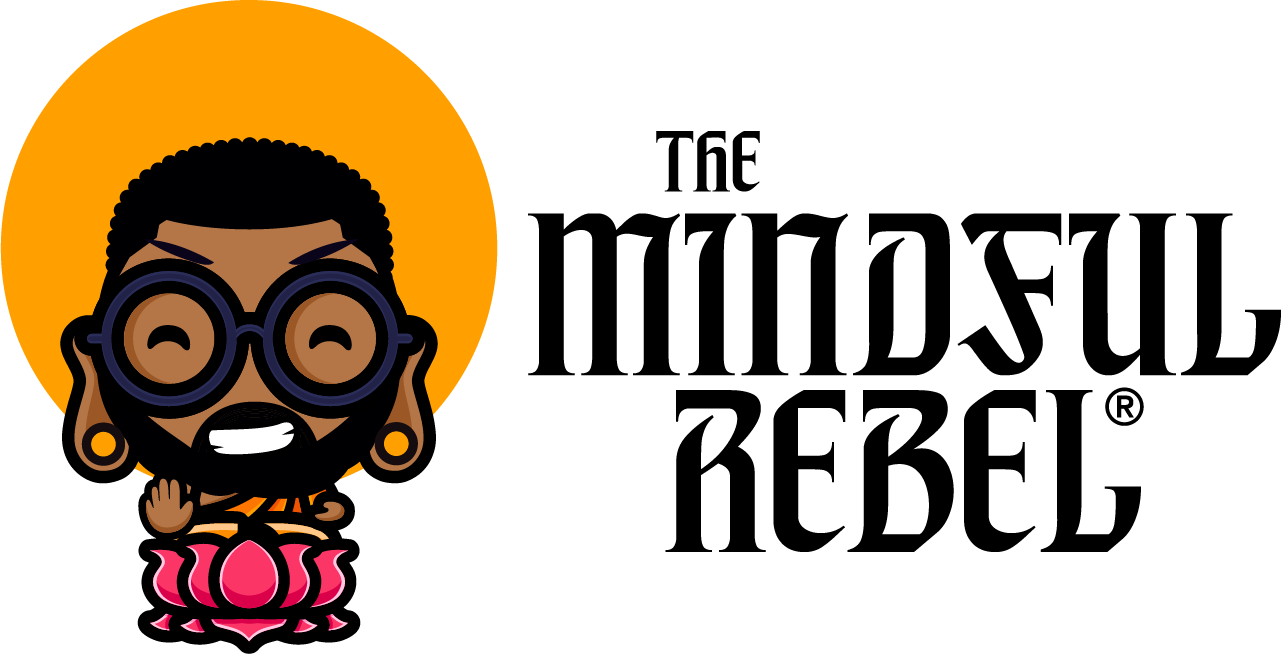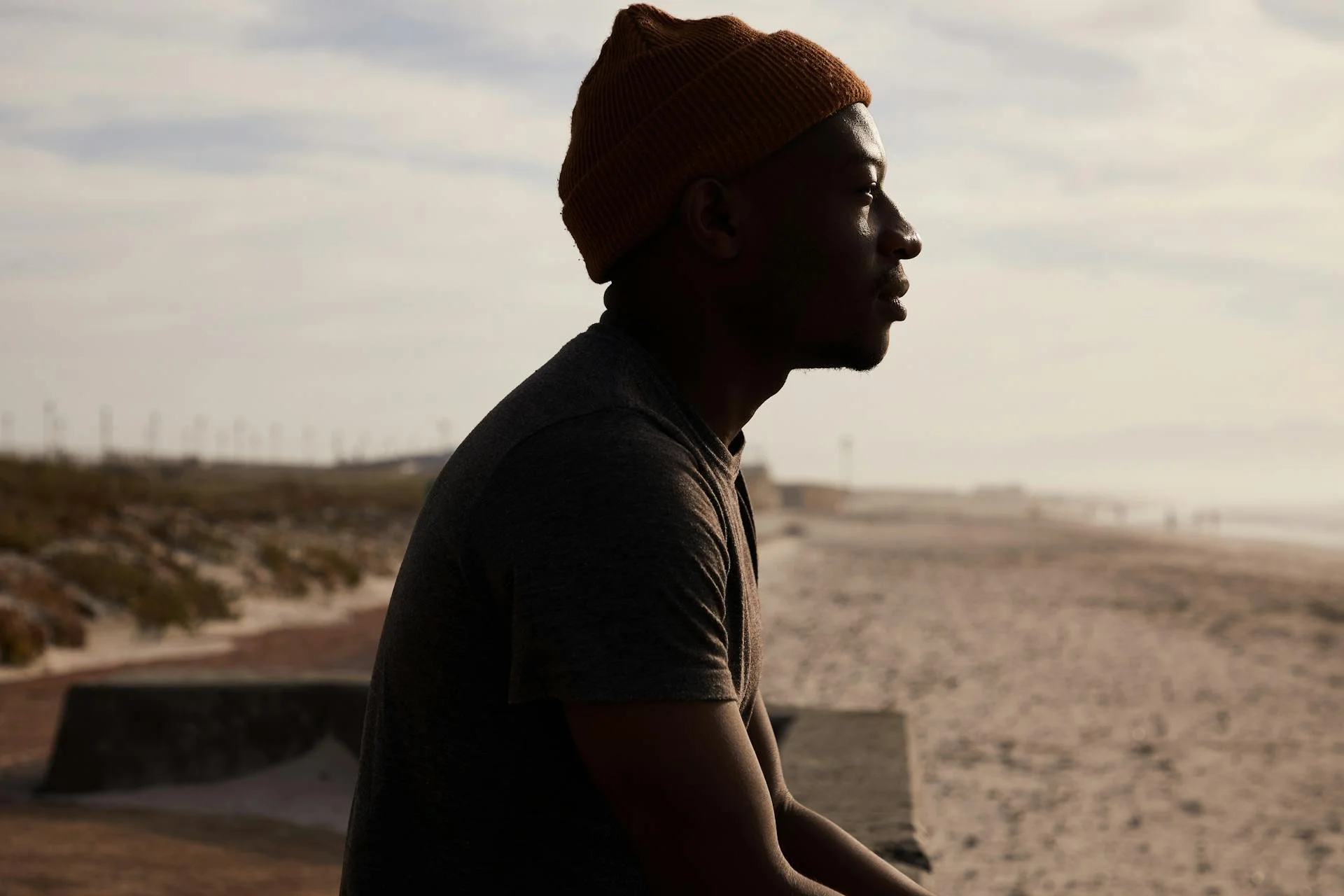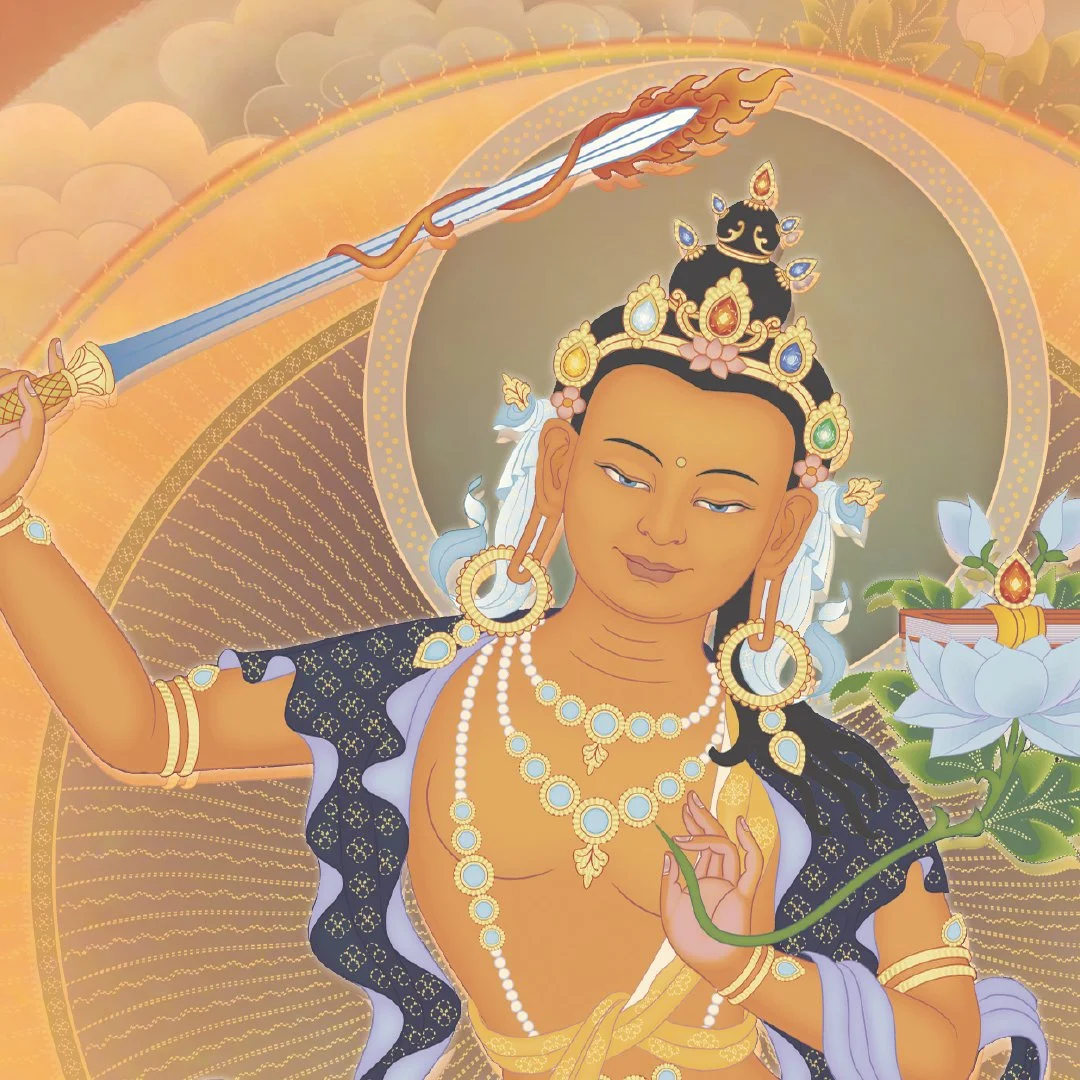Cutting Through the Bullsh*t: Manjushri’s Invitation to Clarity for the Moment We’re In
There are days when I feel like I’m drowning in it all — the endless scroll of news, the pressure to stay connected, the constant stimulation that comes with wanting to show up for those who need care. As someone who lives at the intersection of being Black, queer, and Buddhist, the weight of this moment often lands heavy. The pain tied to the body I live in, the identities I carry, and the work I orient toward in community means I’m never far from the impact that our political times are revealing, and at times I’ve succumbed to feeling overwhelmed. The more I try to hold, the more helpless I can feel.
This is why the imagery of Manjushri, the bodhisattva of wisdom, has always struck me so deeply. It’s the kind of image that lights up something inside me. Not because of the violence we usually associate with swords or weapons, but because of what it represents: the power to slice through illusions, the strength to meet confusion with clarity. And ;et’s be real, a flaming sword is badass! And in the times we are living in, we need that kind of energy more than ever.
The noise around us is deafening. Overwhelm is permeating through all of our feeds, our conversations, even our inner lives. We are overstimulated. We are intentionally dysregulated. Many of us are experiencing pain and suffering that is linked to the very bodies and identities we live in. Pair that with algorithms that amplify outrage, thriving unchecked misinformation, and the constant flood of content that make it hard to know what, and often who, to trust. No need to argue if this is by design. The byproduct is exhaustion and confusion, which keeps us from asking deeper questions, from holding our ground, and from seeing what’s true. And it’s precisely here that Manjushri’s presence feels of the moment.
Who is Manjushri?
In Buddhist traditions, Manjushri is revered as a bodhisattva, a being dedicated to awakening not just for themselves, but for the liberation of all. He embodies prajna, transcendent wisdom, the kind of knowing that opens the gates of awakening. Manjushri is often depicted holding a flaming sword in his right hand, symbolizing the wisdom that cuts through ignorance, duality, and false views. In his left hand, he holds a lotus, sometimes with a text or scroll resting upon it, representing the perfection of wisdom teachings. He is also sometimes shown riding a lion, a powerful image that signifies fearless wisdom and the thunderous roar of truth.
Manjushri is a reminder that wisdom is alive. It speaks, it teaches, it acts. It clears away the fog so we can see things as they are. His flaming sword is a symbol of discernment, the ability to recognize what is real, what is helpful, and what can be let go. In a world fractured by division and steeped in polarization, Manjushri reminds us to return to clarity and what truly matters.
Cutting Through the BS
Right now, illusion is everywhere. Artificial intelligence generates realistic fake stories at the click of a button. News cycles spin half-truths for clicks. Entire platforms thrive on misdirection and outrage. We are living in an age where information is abundant but truth feels scarce.
Manjushri’s sword offers a different way forward. It invites us to pause and ask: Is this true? Is this useful? What lies underneath this surface-level noise? Cutting through the BS asks us to reject living in a haze of distortion. It’s also about reclaiming our capacity to orient toward what is real, what is trustworthy, what nourishes rather than depletes.
Fearlessness and Effort
To take up Manjushri’s sword requires effort and courage in this moment. We don’t need anymore frantic striving or reactive doing. Intentional, courageous, and skillful action is how we vision forward. Mindfulness often gets mislabeled as passive, as if it’s only sitting back and observing. But Manjushri teaches us that clarity demands engagement. The sword must actually be lifted, swung, and applied.
Many of us have been conditioned to doubt ourselves, to second-guess our intuition, to shrink, or to silence our wisdom. Fearlessness, paired with skillful effort, reminds us that we have the capacity and agency to see clearly and to act from that clarity.
Wisdom Paired with Compassion
But wisdom alone is not enough. Manjushri reminds us that discernment must always be paired with compassion. His sword cuts away what is false; but once the fog clears, we must decide how to respond to what we see.
Our country is shifting. Hearts are breaking open in the face of injustice, division, and transformation. More people are waking up to the need for care, for connection, for radical imagination. In this landscape, compassion must anchor our clarity.
Seeing clearly is also about engaging skillfully once we know. Wisdom asks: How do I discern what deserves my energy? Compassion asks: How do I stay grounded in care — for myself, for my people, for the communities I serve — even as I move through division and noise? Together, they guide us to act in ways that sustain and repair rather than deepen the cycle of suffering.
Stepping Into Truth
When confusion is amplified and division is fed, Manjushri reminds us that clarity requires more than hope — it requires effort, discipline, and a deep trust in our own discernment. To wield the sword of wisdom is to recognize that the work of cutting through illusion is ongoing and shared, a practice that belongs to all of us if we wish to sustain ourselves and our communities.
Fearlessness steadies us as we step into conversations and struggles that feel overwhelming, while effort ensures that we continue to act, even when clarity is hard-won. The threshold between confusion and clarity is where we stand, and our task is to keep crossing it with courage. In doing so, we are contributing to the vision and legacy of a more compassionate future shaped by truth.
A few self-inquiry questions to sit with:
When I picture Manjushri’s flaming sword in my own hands, what illusions or distortions would I be willing to cut away first?
What does fearlessness look like for me in this season — not in theory, but in practice, in relationships, in daily choices?
If clarity is a collective practice, how am I contributing to it — or clouding it — in the spaces I move through?



